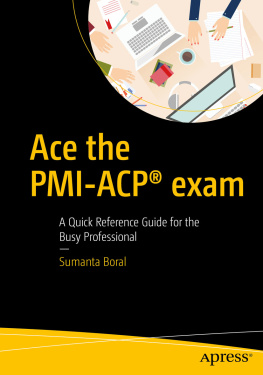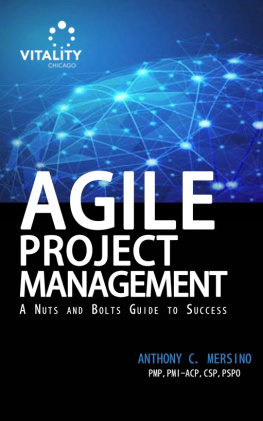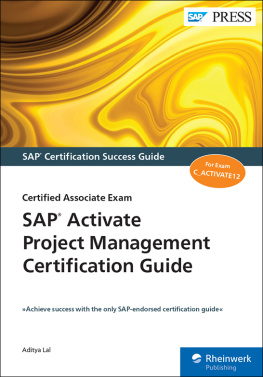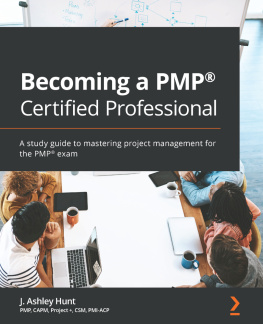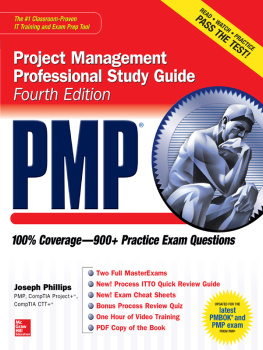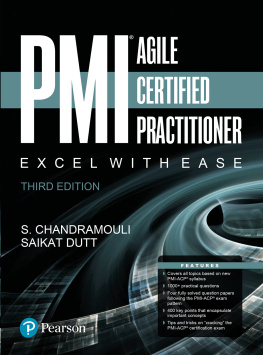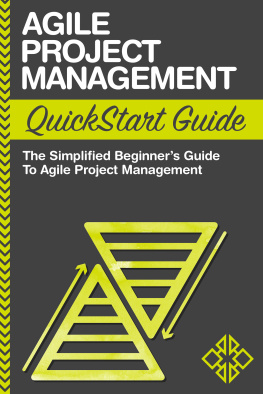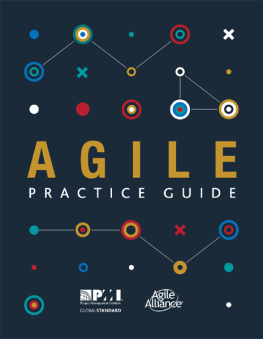Sumanta Boral - Ace the PMI-ACP® exam: A Quick Reference Guide for the Busy Professional
Here you can read online Sumanta Boral - Ace the PMI-ACP® exam: A Quick Reference Guide for the Busy Professional full text of the book (entire story) in english for free. Download pdf and epub, get meaning, cover and reviews about this ebook. year: 2016, publisher: Apress, genre: Business. Description of the work, (preface) as well as reviews are available. Best literature library LitArk.com created for fans of good reading and offers a wide selection of genres:
Romance novel
Science fiction
Adventure
Detective
Science
History
Home and family
Prose
Art
Politics
Computer
Non-fiction
Religion
Business
Children
Humor
Choose a favorite category and find really read worthwhile books. Enjoy immersion in the world of imagination, feel the emotions of the characters or learn something new for yourself, make an fascinating discovery.
- Book:Ace the PMI-ACP® exam: A Quick Reference Guide for the Busy Professional
- Author:
- Publisher:Apress
- Genre:
- Year:2016
- Rating:5 / 5
- Favourites:Add to favourites
- Your mark:
Ace the PMI-ACP® exam: A Quick Reference Guide for the Busy Professional: summary, description and annotation
We offer to read an annotation, description, summary or preface (depends on what the author of the book "Ace the PMI-ACP® exam: A Quick Reference Guide for the Busy Professional" wrote himself). If you haven't found the necessary information about the book — write in the comments, we will try to find it.
Prepare for the Project Management Institutes (PMI) Agile Certified Practitioner (ACP) exam. Augment your professional experience with the necessary knowledge of the skills, tools, and techniques that are required for passing the examination. This is a comprehensive and one-stop guide with 100% coverage of the exam topics detailed in the PMI-ACP Exam content outline. Rehearse and test your knowledge and understanding of the subject using the practice quizzes after each chapter, three full-length mock exams, and practical tips and advice.
You will be able to understand the Agile manifesto, its principles and many facets of Agile project management such as planning, prioritization, estimation, releases, retrospectives, risk management, and continuous improvement. The book covers Agile metrics and means of demonstrating progress. People management aspects such as behavioral traits, servant leadership, negotiation, conflict management, team building, and Agile coaching are explained.Whether you are a beginner or a seasoned practitioner, this book also serves as a practical reference for key concepts in Agile and Agile methodologies such as Scrum, XP, Lean, and Kanban.
What you will learn:
The necessary knowledge of the skills, tools, and techniques that are required for passing the PMI-ACP examinationTo understand the scope and objectives of the PMI-ACP exam, and gain confidence by taking practice quizzes provided in each chapter and three full-length mock examsTo gain exposure to Agile methodologies such as Scrum, XP, Lean, and Kanban plus various tools and techniques required to conduct Agile projectsThe focus is to Be Agile, rather than Do AgileWho this book is for:
The audience for this book primarily includes IT professionals who wish to prepare for and pass the Agile Certified Professional (ACP) exam from the Project Management Institute (PMI). The book also is a practical reference book for Agile Practioners.
Sumanta Boral: author's other books
Who wrote Ace the PMI-ACP® exam: A Quick Reference Guide for the Busy Professional? Find out the surname, the name of the author of the book and a list of all author's works by series.

